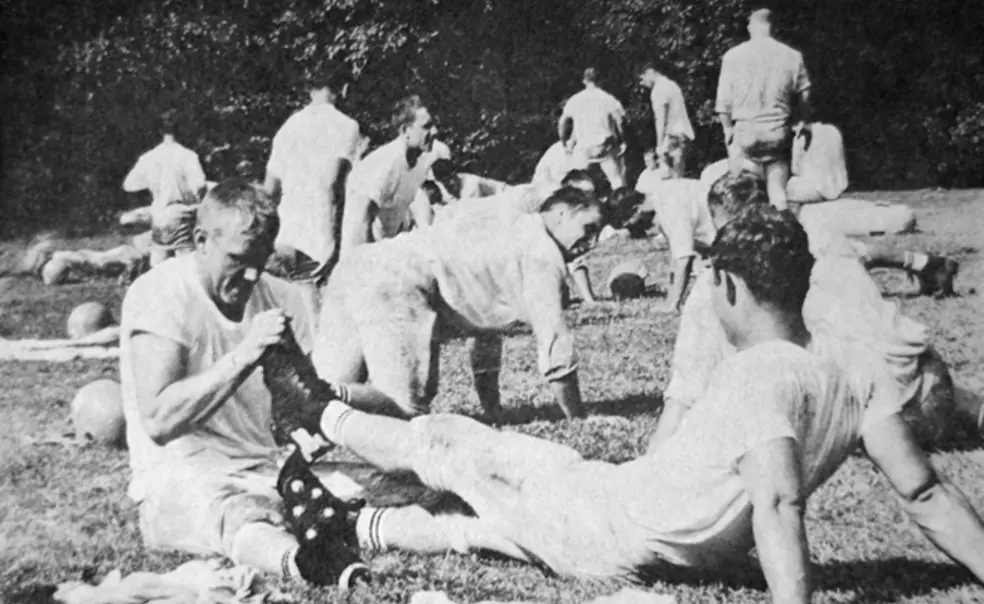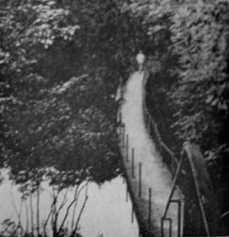From the Archives: Football's Blairstown retreat
On Aug. 25, Princeton football kicked off practice for the 2010 season on campus, at the recently renovated Finney and Campbell fields. But previous generations of Tigers may remember a very different site for August workouts: Blairstown, N.J., near the Delaware Water Gap. The secluded retreat hosted football's preseason practices from 1949 to 1972, when new coach Bob Casciola '58 decided to work out on campus to accommodate a larger roster and provide indoor options on rainy days. In 1967, a few years before Blairstown's final football camp, PAW featured the training locale in the photo essay reprinted below.
From PAW, Nov. 14, 1967
A Blairstown Portfolio
Photographed by George Peterson '65
The Princeton Summer Camp is located three miles north of Blairstown, New Jersey, not far from the Delaware Water Gap. The Camp is owned by Princeton's Student Christian Association and financed, independent of the University, by charity.
The 165-acre site accommodates eight log cabins, a dining hall, a staff building, locker, training, and medical rooms, two full-sized practice fields, and a large lake. The camp is beautiful. Indeed it is startling to find such a "diamond in the rough" of New Jersey. A visitor might justifiably assume that he had been miraculously transported to the Adirondacks, so similar are the climate and topography. Head Coach Dick Colman and his staff are delighted with the camp and so are most of the players who appreciate the cool mornings and evenings. Were it not for the generosity of the Student Christian Association the team would most likely practice and live in Princeton. If the local humidity did not kill the boys, the pizzas and late movies would.
During the summer, the camp is dedicated to the well being of underprivileged youth from Metropolitan New York. The SCA loans the facilities to the football team for the fifteen days allotted for their preliminary training.
The players may grumble about Blairstown's remoteness, but the coaches rejoice in it. Every available minute is devoted to conditioning, teaching new skills and plays, and deciding on personnel placement. Coach Colman has repeatedly emphasized that the outcome of the season is largely determined by the decisions he and his staff make regarding the positioning of personnel, and by the ability of his players to absorb fundamental skills.
Colman believes that the seemingly simple and oft-ignored fundamentals, blocking and tackling, can never be overemphasized. Well-disciplined men win championships, and Coach Colman's record proves this point. Opposing coaches respect him for his ability to mold inexperienced players into competent football men and they regard Princeton as the most dangerous late-season opponent in the Ivy League, regardless of the team's record at the time. Some of the credit should go to Blairstown.

















No responses yet